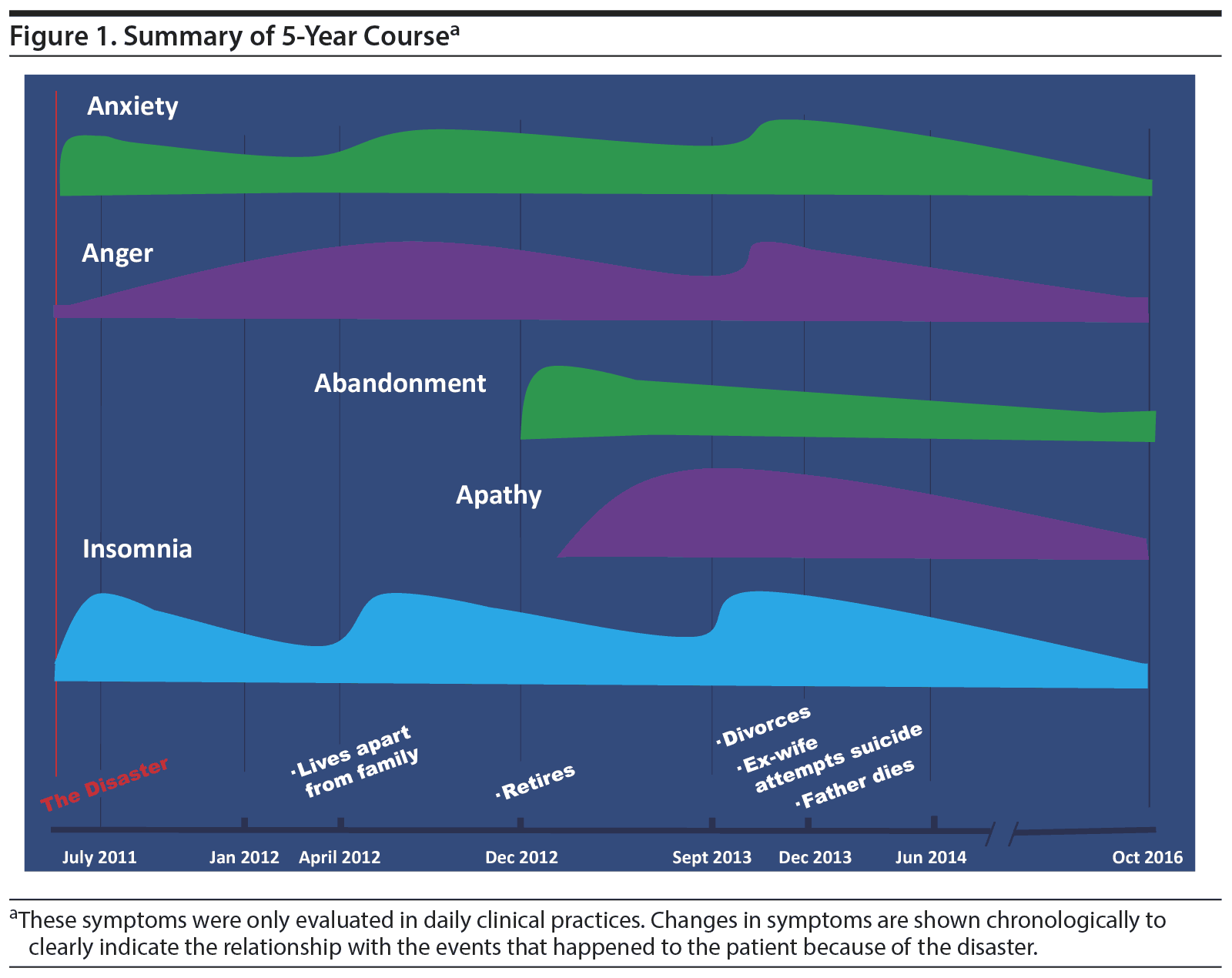Because this piece does not have an abstract, we have provided for your benefit the first 3 sentences of the full text.
To the Editor: On the 11th of March 2011, the Great East Japan earthquake led to a massive tsunami that caused severe damage to Tokyo Electric Power Company’s (TEPCO’s ) Fukushima Daiichi Nuclear Power Plant (NPP) in ÅŒkuma town. Because of the resulting radiation hazard, residents living nearby were forced to evacuate. In April, many of these evacuees began relocating to Aizuwakamatsu city.
A 5-Year Follow-Up of Psychological Distress Caused by the Fukushima Daiichi Nuclear Power Plant Accident: A Case Report
To the Editor: On the 11th of March 2011, the Great East Japan earthquake led to a massive tsunami that caused severe damage to Tokyo Electric Power Company’s (TEPCO’s ) Fukushima Daiichi Nuclear Power Plant (NPP) in ÅŒkuma town. Because of the resulting radiation hazard, residents living nearby were forced to evacuate. In April, many of these evacuees began relocating to Aizuwakamatsu city.1 Their fatigue seemed to increase daily. Even though they feared exposure to radiation, experiencing anxiety and anger, they did not know anyone to whom they could complain. Although several surveys regarding the mental distress of evacuees have been conducted,2,3 there have been no reports with long-term follow-up that focus on their specific symptoms. However, such clinical details are extremely important to hand down for posterity. Here, we report one typical case followed for 5 years.
Case report. A 51-year-old man who worked as clerical staff at a factory had lived near NPP. After the disaster, he was forced to evacuate from ÅŒkuma town to Aizuwakamatsu city with his family. He continued his job, which included taking calls from clients, and he soon became exhausted from explaining the situation regarding the company and the disaster. He started to become anxious and scared of answering the phone, then suffered from loss of appetite and insomnia. Although he began taking medication in July, he stayed in a depressive state. Soon after, his family was forced to split up because of work and school, and his feelings gradually turned to anger. He felt so lethargic that he lost motivation to work. At the end of 2012, he began to direct his anger toward TEPCO and the Japanese government, blaming them for all of his problems, including those with his family, work, and future. However, he couldn’ t do anything about the situation—he felt abandoned, became apathetic, and subsequently retired. Less than a year later, he found himself divorced because his relationship with his wife had gradually worsened. He developed insomnia. A short time after the divorce, his ex-wife, who was suffering from an adjustment disorder, attempted suicide, and his father died as a result of the evacuation, being unable to return home. The man started feeling empty inside. Although he felt fatigued, he continued to drive long distances to see his children if needed. He was starting to accept that he would never be able to return home to live, but his feelings of fatigue have remained.
As demonstrated in this case, many evacuees often find it difficult to adapt to new circumstances and thus experience prolonged depression and unexplained physical symptoms. In addition, their anger tends to transform into feelings of abandonment and helplessness after a few years.
Studies2,4 previously conducted on these evacuees have identified risks and influences for psychological distress. Some of them do not apply to this case, but the process of distress over time was apparent (Figure 1). That is to say, accumulated tragedies caused by a disaster can cause psychological distress, long-term psychiatric symptoms, and impairments in the pursuit of life plans of evacuees, even those without a history of mental illness. This case provides an example of characteristic and typical problems resulting from the Great East Japan earthquake.
In addition, "ambiguous loss" and namagoroshi, which means "to be half alive, half dead," have been identified as distinctive problems experienced by evacuees.5 Although their homes may remain, they were forced to leave them without saying goodbye. In other words, the community exists physically, but not psychologically. Also, some evacuees tend to merely survive as opposed to live, having remained in agony due to not knowing their possible future or that of their village. Therefore, their psychiatric problems are complicated and unique and have never been experienced before. We should follow such cases not only for the accumulation of scientific knowledge but also for the provision of proper care.
These symptoms were only evaluated in daily clinical practices. We showed the change of these symptoms chronologically to clearly indicate the relations with the events that happened to this man because of the disaster.
References
1. Irisawa A. The 2011 Great East Japan earthquake: a report of a regional hospital in Fukushima prefecture coping with the Fukushima nuclear disaster. Dig Endosc. 2012;24(suppl 1):3-7. PubMed CrossRef
2. Kunii Y, Suzuki Y, Shigeta T, et al. Severe psychological distress of evacuees in evacuation zone caused by Fukushima Daiichi Nuclear Power Plant accident: the Fukushima health management survey. PLoS One. 2016;11(7):e0158821. PubMed CrossRef
3. Kukihara K, Yamawaki N, Uchiyama K, et al. Trauma, depression, and resilience of earthquake/tsunami/nuclear disaster survivors of Hirono, Fukushima, Japan. Psychiatry Clin Neurosci. 2014;68(7):524-533. PubMed CrossRef
4. Goodwin R, Takahashi M, Sun S, et al. Psychological distress among tsunami refugees from the Great East Japan earthquake. BJPsych Open. 2015;1(1):92-97. PubMed CrossRef
5. Boss P. Ambiguous Loss: Learning to Live with Unresolved Grief. Cambridge, MA: Harvard University Press; 1999.
aDepartment of Neuropsychiatry, Aizu Medical Center Fukushima Medical University, Fukushima, Japan
Author contributions: All authors contributed to patient management and writing the report.
Potential conflicts of interest: All authors declare that they have no biomedical financial interests or potential conflicts of interest.
Funding/support: None.
Patient consent: Written permission was received from the man in this case to present this report; information was de-identified to protect anonymity.
Published online: February 15, 2018.
Prim Care Companion CNS Disord 2018;20(1):17l02144
To cite: Saigo K, Kunii Y, Kawakatsu S. A 5-year follow-up of psychological distress caused by the Fukushima Daiichi Nuclear Power Plant accident: a case report. Prim Care Companion CNS Disord. 2018;20(1):17l02144.
To share: https://doi.org/10.4088/PCC.17l02144
© Copyright 2018 Physicians Postgraduate Press, Inc.
Please sign in or purchase this PDF for $40.00.





